Archive for ‘Reading’ Category
12 Ways to Organize Your Life to Read More — Part 2 (Reading Lists, Challenges & Ice Cream Samples)
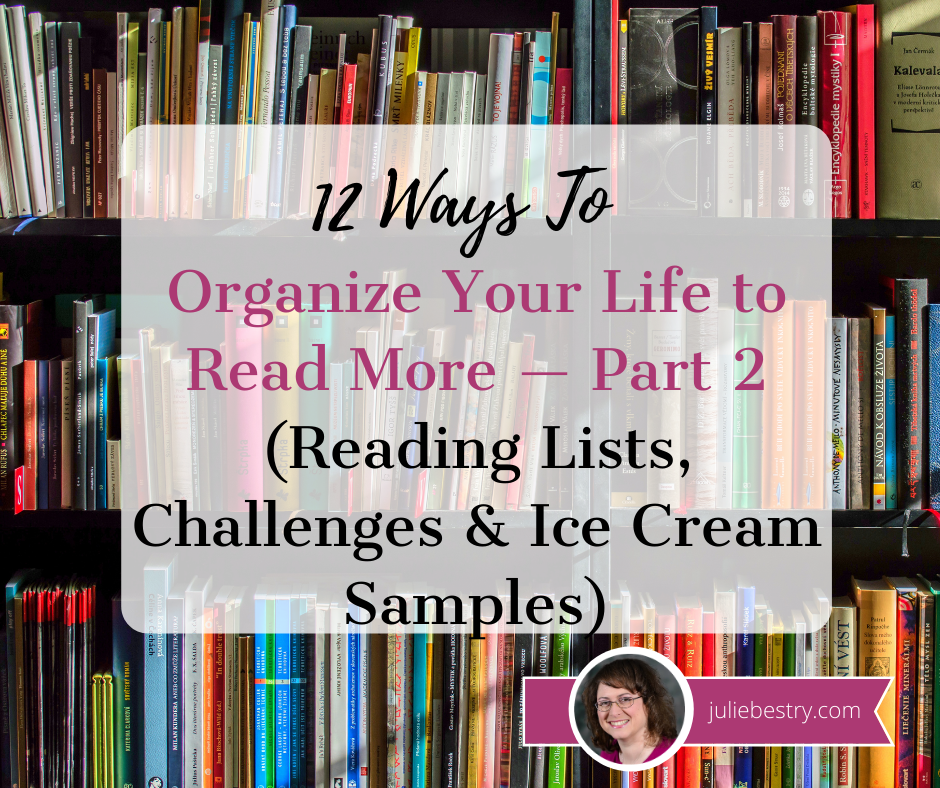
Last time, in 12 Ways to Organize Your Life to Read More — Part 1, we discussed the first six ways to create order in your space and schedule so you can read more.
- Gather your TBR (to be read) collection.
- Schedule your reading time.
- Create physical space for reading.
- Replace a habit with reading.
- Read with others.
- Be part of a cultural experience.
Today, the list continues with six additional ways to encourage reading more of the things you want and get more enjoyment out of the experience.
7) Develop a reading list with great recommendations.
Having that TBR list of books is helpful if you’ve already laid in a supply of next-up titles, but what if you don’t know what you want to read? Goodreads’s Listopia is a great source for pre-existing lists collated from site-wide recommendations, everything from compelling suggestions in Best Time Travel or Best Non-Fiction of 2019 to celebrities’ (and other individuals’) own curated lists, like James Patterson Recommends His Favorite Thrillers to Glennon Doyle’s Books for Challenging Times.
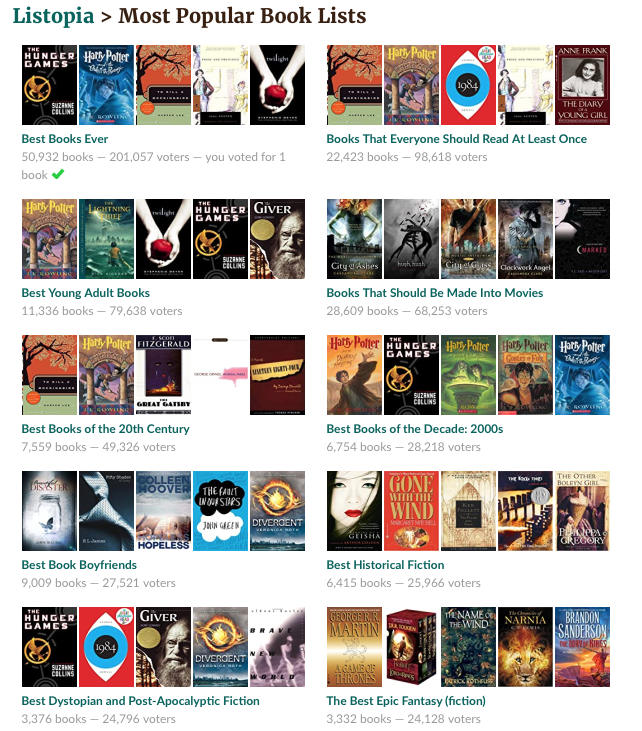
Public library websites have reading lists developed by librarians. And just Googling a topic you’re more interested in will help you find great options. For example, when I typed “anti-racist reading lists” into the search box, I got over 33 million hits, and just selecting the top three yielded sources for a good start:
- New York Times: An Anti-Racist Reading List (compiled by Ibram X. Kendi)
- Phoenix Public Library: An Anti-Racist Reading List (compiled by librarians)
- WBUR-FM, Boston: A Reading List on Race for Allies Who Want to Do Better (compiled by Arielle Gray)
Famous people have famous reading lists. Previously, presidents have made their reading lists public, such as here, and here. Productivity author James Clear maintains a website called 100 Good Books To Read, which recommends far more than 100 books, with lists broken down by category. Billionaire Bill Gates maintains an entire section of his GatesNotes blog for discussing the books he recommends.
There’s even a website called The Reading Lists, collating everything from “Best Tear Jerkers” to “The Most Important Books on Dinosaurs” to “Must Read Books for Aspiring Writers.” Whether you want to find more books like the ones you love, or you want to explore a new genre, there are book lists to serve your needs.
You can also get great recommendations from blogs, podcasts, and apps. For example:

By The Book Podcast – Imagine if you combined a self-help reality show with a podcast about book reviews. For each episode, podcast veterans Jolenta Greenberg and Kristen Meinzer (along with their long-suffering and fan-favorite husbands) summarize a self-help book and then live by the precepts of that book for two weeks.
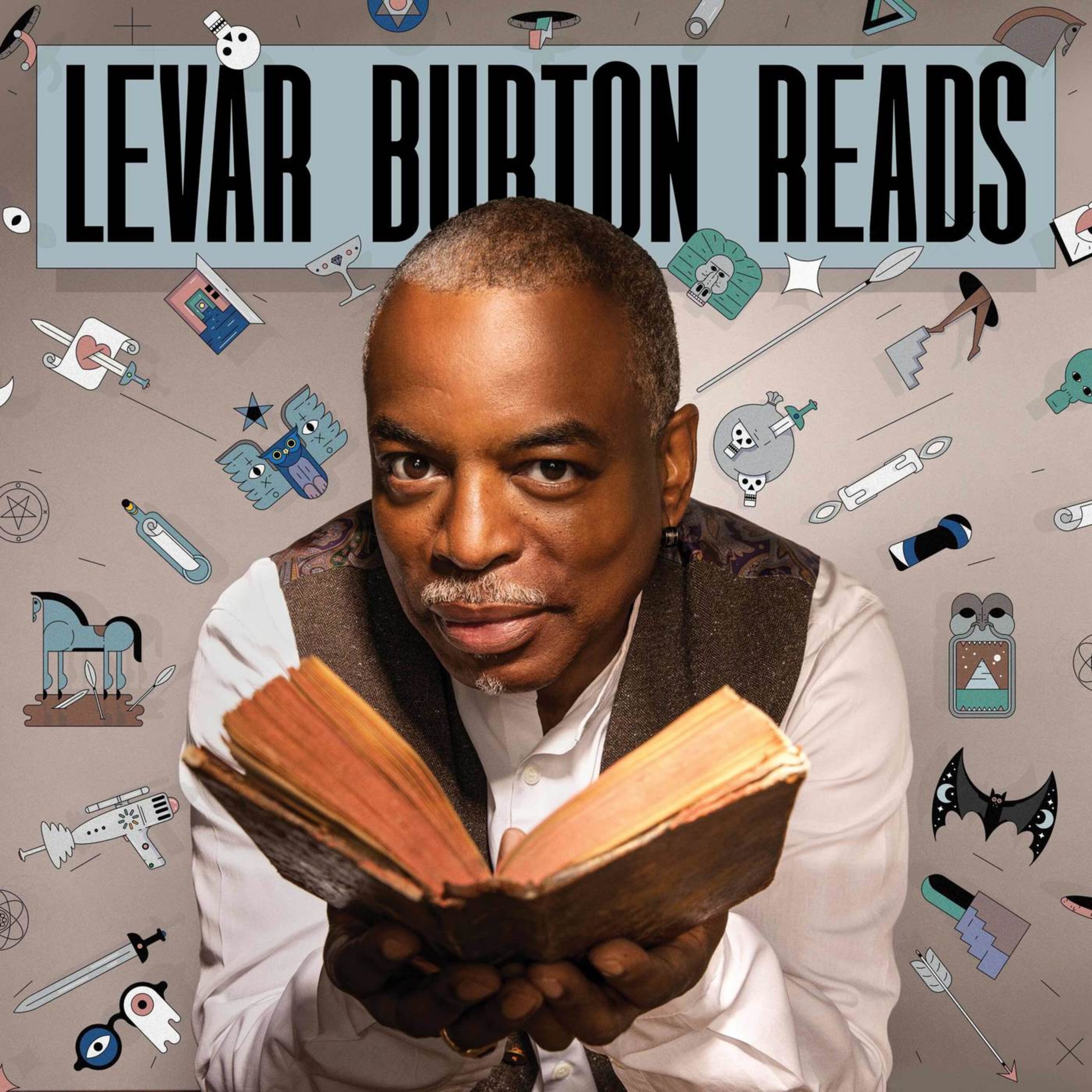
LeVar Burton Reads – Yes, the same Reading Rainbow star who spent 26 years helping get kids excited about reading has an inspiring reading-themed podcast for adults. In each episode of LeVar Burton Reads, now in it’s third year, Burton reads (in the same soothing voice that captivated generations) a piece of short fiction he chooses himself, in genres ranging (in his own words, in a 2017 interview with The New Yorker), “from fantasy to mystery to comedy and, of course, my go-to, science fiction.” Authors represented on the podcast have included Octavia Butler, Joan Aiken, Ray Bradbury, N.K. Jemison, Neil Gaiman, Haruki Murakami, and more.
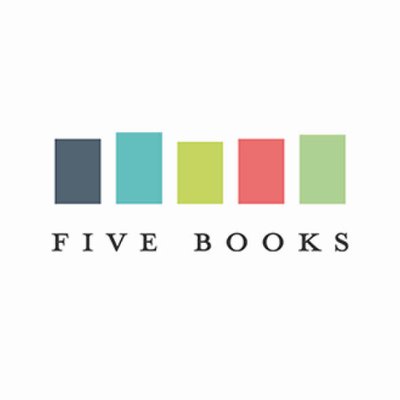
Five Books – What if, when you wanted to read a book, you could ask experts on that topic what you should read? That’s the premise of Five Books, with an archive of more than one thousand interviews and five thousand book recommendations, offering two new interviews each week. For example, humorist Andy Borowitz gives his list of the best books on comic writing, while biographer Andrew Roberts offers up the best books on Napoleon.
Non-fiction topics cover art, business, economics, history, health and wellness, language, philosophy, politics, psychology, religion, sports, technology and more, and include titles for children as well as adults. Fiction-related recommendations run the gamut of genres from classic and contemporary literature to literary criticism, from crime and mystery to romance and horror, and from poetry to science fiction.
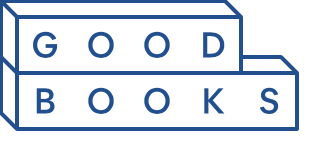
GoodBooks – This site describes itself as “Books recommended by successful people” – with 8500+ recommendations from “the most successful and interesting people in the world.” A little self-aggrandizing? Maybe. But the experts hail from media, technology, journalism, science, education, venture capitalism, design, entrepreneurship, activism, and other professions, and they recommend titles ranging from classics to some of today’s best-sellers, and there’s even a Top 100 most-recommended list. (Is 100 too daunting? How about just enough titles to read a book a month with GoodBooks’ top 12 list?)
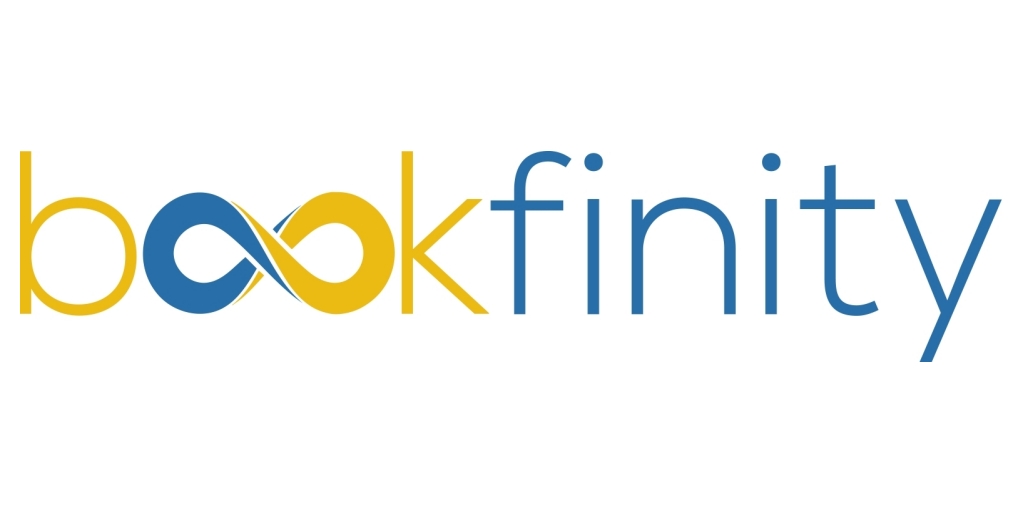
Bookfinity – Perhaps you’re less interested in what the experts like to read and would prefer a fairy godparent to zap up the perfect read for you? Bookfinity uses the quirkiness of those social media “Which Marvel superhero are you?”-type quizzes to create recommendations customized for your reading preferences. (One note: you must create an account to access recommendations.) Once in the system, you can rate whether you like or hate Bookfinity’s recommendations for you, improving the algorithm.
8) Change formats.
I am a book snob. I like the weight of a real book, and want to be able to flip back-and-forth, check the “feel” of how many pages are left until the end of the chapter or the book, and even stop to look at the author photo. I tend to forget about books I’ve downloaded to the Kindle app on my iPad, whereas my To Be Read shelf is near and always reminding me what’s next. And honestly, unless I’m listening to an audiobook with a compelling plot, I tend to daydream.
But I grant you – sometimes, you just need to change it up.
You can’t (safely) read a book in the bathtub, but you can put your Kindle (or other ereader) in a zip-lock bag and read until your fingers get prune-y. Your local bookstore or even online shop may run out of stock, but ebooks and audiobooks are available at the click of a button.
During the first four months of the COVID-19 pandemic, my public library was closed and I couldn’t get my usual hefty pile of books. But you know what I could do? I could sit in my PJs at 2 a.m. and borrow digital copies of books at no cost by using my library’s digital platforms like Hoopla, Overdrive (accessible via the Libby app), and RBDigital to acquire books, ebooks, and audiobooks. (They also have magazines, comic books, albums and movies.)
And sometimes, you need a little support. Storyline Online, sponsored by the Screen Actors Guild, features celebrities (like Rita Moreno, Lily Tomlin, Rami Malek, and Kevin Costner) reading children’s books. That might be just what you need to save yourself from another night of reading your tiny human Hop On Pop on repeat, perhaps even giving you time to read your own books.
Experiment to see what book formats you find compelling. If listening to a novel while you cook or drive means you’ll get to submerge yourself in a story you’d otherwise miss, isn’t it worth trying?
9) Track Your Reading
You may wonder how tracking your reading helps you read more. But the more you measure your effort, the more inclined you are to improve that effort. Also, keeping track of what you’ve read prevents you from accidentally buying or borrowing (and then reading) the same book more than once.
The no-effort way to track your reading is to keep your read and to-be-read books separate. Once a book is completed, move it to the “read books” area. Of course, I wouldn’t be much of a professional organizer if I didn’t encourage you to let go of books you’ve read and have no intent (or desire) to read again. But if you let go of books to prevent them from piling up, there’s not much of a record of what you’ve read. However, there are other options.
Keep a reading journal. Take quick notes in your phone or keep track of your reading habits, favorite quotes, and thoughts on what you’ve read in a bullet journal.
Log your books digitally. Opt for something simple, like a sortable Excel or Google spreadsheet. There are also myriad book journaling apps, like Book Log, ReadingList, and Litsy.
Track what you’ve read in a website that lets you log, rate, and review books. I like how Goodreads lets me create a pathway for tracking books. When I hear of a book I might like to read, I enter it in the search box; when it comes up, I click “Want to Read.” If I start reading, I change the status to “Currently Reading” and later to “Read.” Then I can give it from one-to-five stars and write a review.
Marking the book as “Read” puts it into a chart of “My Books,” which I can sort by title, author, average rating, my rating, date I added it to my account, and date I finished reading it. I can also view and edit my reviews from this page, and change the virtual shelf on which I’ve put it. You can add your own shelving categories. Mine include, “Books by My Friends and Colleagues” and “Books That Would Make Good Gifts.”
Logging books comes in handy when someone asks me what I thought of a book. One of my favorite fiction genres is time travel; when you read a lot in one genre, it’s easy to confuse the plots, so seeing my ratings and reviews helps. It also helps me find titles I want to recommend. Recently, a friend told me that her daughter likes reading “art theft” books like Chasing Vermeer. I remembered that I’d accidentally read a book for younger readers along those same lines, but couldn’t recall the author. One quick scroll through the my reading list and I found Walls Within Walls, which I’d read in 2011!
10) Participate in Reading Challenges
I walk for exercise, but until I got a Fitbit, I never stuck to one regimen for very long. For a while, just trying to hit 10,000 steps a day kept me at it, but at the start of 2020, my best friend and I started doing the Workweek Hustle Challenge, where we “compete” (gently) against one another on steps counted. Her son recently joined in and invited us to to achieve certain measures of steps, miles, and minutes of exercise on Fitbit’s BINGO card contests.
Similarly, while I enjoy practicing my Italian lessons on Duolingo, keeping my travel partner’s score (each week, if not daily) gives me that extra boost.
Goodreads runs a challenge where you announce to your friends how many books you intend to read for the year; watch your ticker count up as you read, and note whether you are “ahead” or “behind” for the year. Book bloggers run some pretty famous challenges where you can amass different types of reading experiences: read a book in translation, read a book in a genre you’ve never explored, read a book with fewer than 100 (or more than 1000) pages, etc. You might want to try:
- The Modern Mrs. Darcy 2020 Reading Challenge
- 52 Books In 52 Weeks (multiple challenges)
- World Reading Challenge: Books Around the Globe 2020 (from Tale Away)
- The Master List of Reading Challenges from Girl XOXO (with a fancy and complex tracking spreadsheet to log all of the reading you do for all of the challenges in which you participate)
- Epistolary Reading Challenge (I love a book written in letters!)
- Newberry Reading Challenge (to read Newberry- & Caldecott-winning children’s books)
- Pop Sugar Reading Challenge (There’s also a Summer 2020 challenge.)
- Penguin/Random House #Read20In20 Reading Challenge
11) Read Books About Reading Books
Although it’s not everyone’s cup of tea, I find that reading books about the enjoyment of books boosts my enthusiasm when I’m not feeling up for adventurous bout of reading. Author-Librarian Nancy Pearl, who is so beloved among readers that she has her own action figure, has made a name for herself with her Book Lust series (Book Lust, More Book Lust, Book Lust to Go, and Book Crush), collections that recommend books for every taste, moment, and mood.
Consider books that recommend titles based on books you like or experiences you’re going through, such as Ella Berthoud and Susan Elderkin’s The Novel Cure: From Abandonment to Zestlessness – 751 Books to Cure What Ails You, Mirchael Dirda’s Browsings, and Sandra Newman and Howard Mittelmark’s snarky Read This Next: 500 of the Best Books You’ll Ever Read.
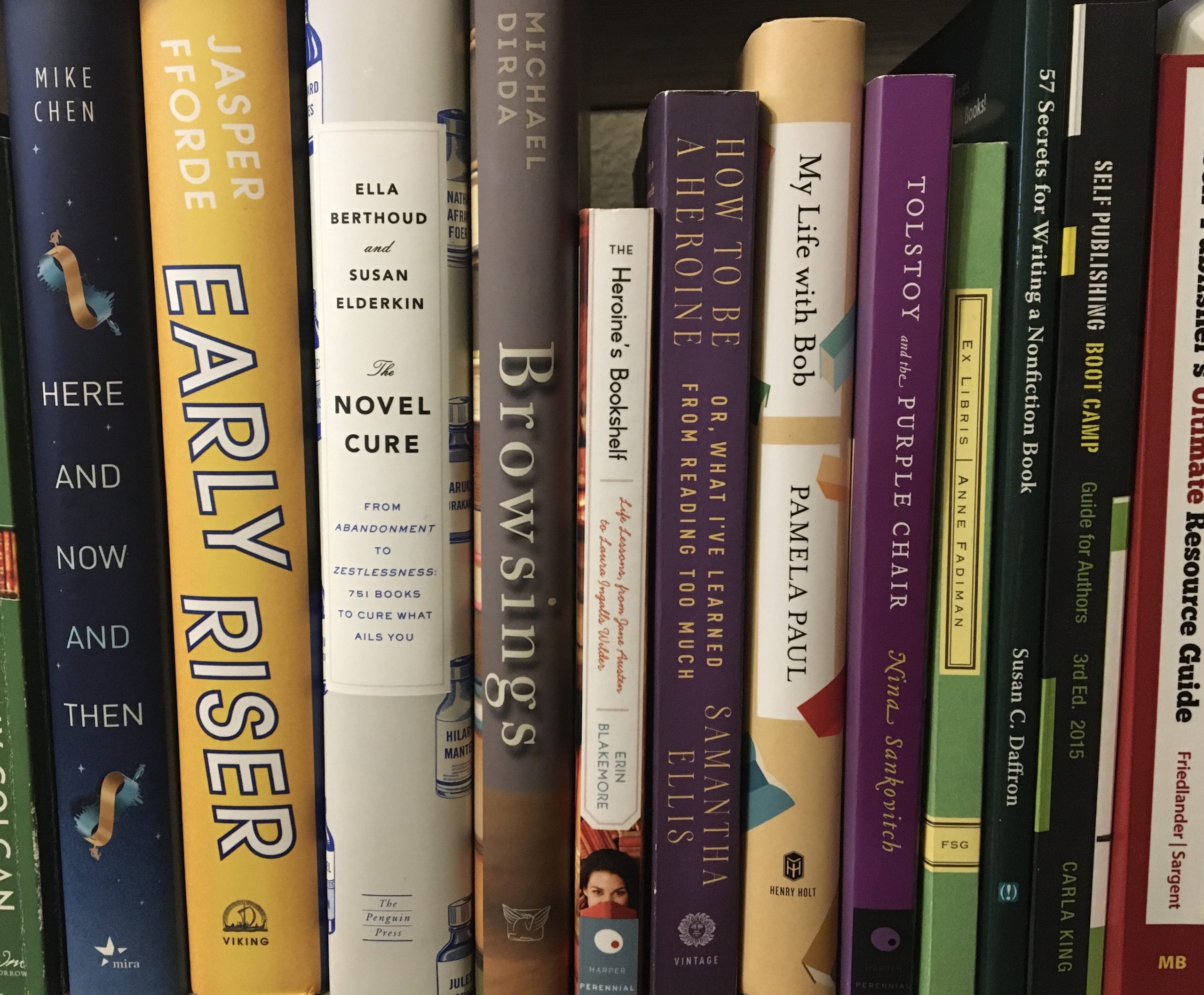
For years, novelist Nick Hornby had a monthly column in the Believer where he detailed the books he’d bought and the books he’d read (with minimal crossover in any given month), and combined short-term memoir and (award-winning) criticism. The columns were collecting in a series of books, including The Polysyllabic Spree, Shakespeare Wrote for Money, and Housekeeping vs. The Dirt.
Finally, there are just some great books of essays about books. The best, for my money, is Anne Fadmian’s Ex Libris: Confessions of a Common Reader, but my TBR still includes:
- My Life With Bob: Flawed Heroine Keeps Books of Books, Plot Ensues
- The Heroine’s Bookshelf: Life Lessons from Jane Austen to Laura Ingalls Wilder
- How To Be a Heroine: Or, What I’ve Learned from Reading Too Much
12) Develop an appetite with an ice cream sample.
No matter how many recommendations you get, sometimes, you just have to sample the material to know if it’s a good fit.
One trick is picking a specific page number, say page 53, and checking out the writing style without any preconceived notions of the book. If that random page appeals, it’s a good sign. We’re not spending much time in brick & mortar bookstores these days, though, so another option is the “Look inside the book” feature at Amazon, which allows readers to read introductions, tables of contents, and sample chapters to get a sense of whether a book is a good fit.
It can be difficult to find a compelling non-fiction book, especially for professionals with so many buzz-wordy titles vying for their attention. For them, there are online services that allow you to sample books by getting summaries of the material.
Next time, we’ll be looking in-depth at sites like Sipreads, 12 Minutes, Read It For Me, Blinkist, and more to help you get a birds’-eye-view of important non-fiction titles and find the books most worthy of you investing your reading minutes.
Until then, happy reading!
12 Ways to Organize Your Life to Read More — Part 1 (When, Where, What, With Whom)
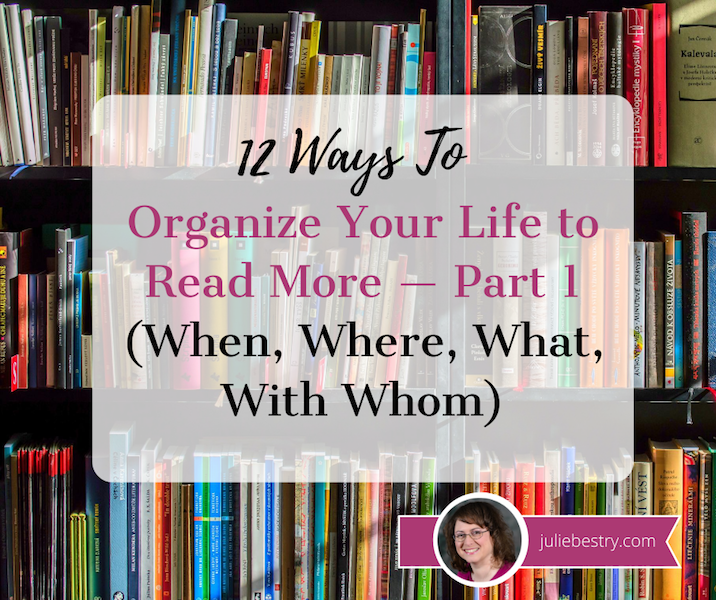
Read any good books lately?
- Does the longest book you’ve read lately end with “Goodnight stars. Goodnight air. Goodnight noises everywhere?”
- Are you being mocked mercilessly by a pile of unread books on your bedside table?
- Maybe you’d like to read that popular novel before it becomes an HBO series?
Paper Doll gets it. Even for the heartiest of readers, there are seasons of life, and in some of those seasons, we aren’t reading. Sometimes, parenthood, work, or a chaotic life gets in the way. Sometimes, there’s a global pandemic giving us all the time to read we could ever want, but we just lack the motivation. (Hey, at least we’re not Burgess Meredith in the saddest episode ever of the Twilight Zone!)
We’ve covered organizing for reading time before, in 12 Tips for Organizing Your Reading Time and Organizing Your Reading Space for More Reading Time. But the world seems like it’s changed quite a bit since 2014, and it’s time to look at some new ways to make your life more reading-friendly.
10 WAYS TO ORGANIZE YOUR LIFE TO READ MORE
1) Gather your TBR collection.
TBR, or “to be read,” may have been a popular acronym previously, but I only learned of it when I started reading the Modern Mrs. Darcy blog. Early on in the quarantine, I had a surprise UPS delivery. My best friend had sent me a bookshelf from my favorite line, Origami Rack. The one she sent me is currently unavailable, but it looks like this…except mine is filled with books, with a corner of the top shelf given over to colorful Post-It® stacks and USB drives.
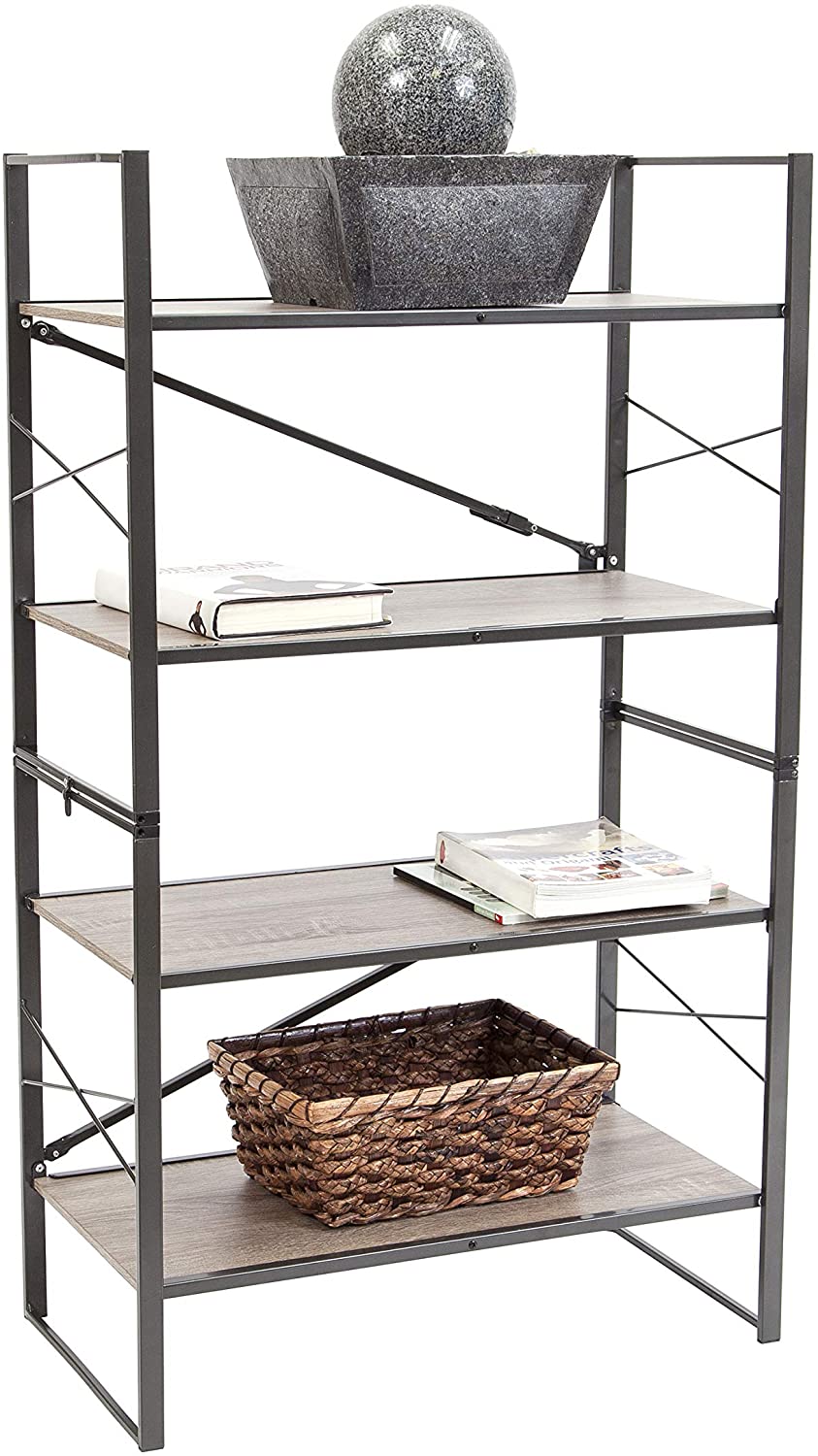
I was so delighted by the bookshelf, I rearranged my office space so that the bookshelf was to my right (appearing prominently in the hundreds of Zoom meetings I was about to have, dramatically improving the aesthetics of my space). I then went through every nook and cranny of my home, collecting every book I had not yet read, and I was shocked at how many unread titles I found:
- 8 novels
- 7 books about reading books
- 6 books about freelance writing
- 9 books about Jane Austen
- 5 books about diabetes
- 4 books about organizing and productivity
- 3 business books, 2 books about the history of Cornell University, and Lin-Manuel Miranda’s GMorning, Gnight! Little Pep Talks for Me and You, which doesn’t really fit any category.
Honestly, I knew I had quite a few unread books, but anticipated they might all fit on one shelf. Having them all in one place, and arranging them by category, made it easier to pick something when the inspiration struck. There are only two novels left, and I’m working my way through the other titles.
Your TBR shelf may just be half a shelf, or your bedside table, or a small square of counterspace. But bringing all of your to-be-read titles together gives you a starting point.

2) Schedule your reading time.
Early during the pandemic, Mike Vardy, The Productivityist, made a short video detailing how to create a good morning routine. When he talked about having 30 minutes of reading time during and after breakfast, it caught my attention.
I have natural points in my day when I might gravitate toward pulling a book off the shelf, usually at the end of the afternoon when I’ve finished my work but am not ready for dinner. Other people naturally read before bed or on their commutes (whether traditional reading on public transportation or listening to audiobooks while driving or riding). These tend to be defaults, times when they’re unlikely to do anything else.
But Mike, like many successful readers, has a firmly-set block in his schedule. He gets up, has breakfast, and reads before any of the chaos of the day can seep in and derail him. He reads before he’s checked email, or made phone calls.
If you’re afraid you’ll get too involved in your book and miss appointments or obligations, set an alarm on your computer, phone, or watch. See if a friend or colleague would like to read at the same time! You could arrange a five-minute phone or text conversation to connect after your reading block to talk about what you’ve read. You’re far less likely to tell yourself “one more chapter…” if you know someone is waiting.
Scheduling a reading block each day doesn’t eliminate the serendipity of coming across some quiet moments where you can hug a book to your chest and get lost in a story. It just means you’re guaranteed some time in your day and space in your schedule for delighting in the written word.
3) Create physical space for reading.
Carving out time for reading is only part of the story. Do you have a place to read? I mean, in theory, you can read anywhere except the shower. I’ve been known to hold my hair dryer in one hand an a good book in another, and I have friends who read in the kitchen while they stir. (Important PSA: Don’t chop and read!)
For some of us, any chair, bed, or square of floorspace will do. If you love to read but avoid reading, you may need a reading nook that’s more conducive to your physical needs. A comfy chair situated outside of the traffic patterns of your house, natural light (or a good reading lamp), a cozy blanket, a small table to hold your phone, beverage, and glasses – doesn’t the idea of this space feel compelling?
Consider employing a currently-unused space for your reading nook, like the corner of your guest room or some open space at the top of your stairs. Basically, if there’s an area in your home that doesn’t require you to move things around to vacuum, that’s a potential reading nook.
4) Replace a habit with reading.
Nancy Haworth, a friend and colleague in my mastermind group (a small group for accountability) shared the following as one of her monthly goals: “Focus on reading books more, rather than getting sucked into social media and news online.”
For the past two months, she’s been reporting what she’s read and how much progress she’s made, both on avoiding the dumpster fire that is the world these days (both in the news and on social media) and on specific books.
This approach would be tough for me. During each transition between activities, from email to writing, or from phone calls to deep work, I instinctively click on news sites to get that dopamine hit. But a recent weekend, during which my schedule was unusually devoid of obligations, I read a 468-page book, and I accomplished it in large part because I avoided turning to news sites and social media.
Are there other habits you’d like to break, or at least bend? If you tend to snack in the mid-afternoon, could moving to your reading nook instead of the kitchen help you accomplish that? If you’ve been working from home instead of the office, chances are that you spend more time sitting at your desk – there’s no cake in the break room or conversations over coffee with colleagues, and there’s no rush to leave work to deal with a commute. If you’re giving the office a little too much of yourself, a few 15-minute reading breaks could be just what you need.
5) Read with others.
Usually, the solitary experience of reading is a comfort. When you read (or reread) a favorite novel, it sometimes seems like you’ve become a quiet (and pleasantly ignored) minor character with a front-row seat to the goings-on. But other books, particularly non-fiction titles focused on topics like business, psychology, history, or current events, create an environment where you want other voices in the room, other people to help you debate whether the author is right, or tease out the true meaning of a paragraph.
Partner with a friend or colleague. It’s like the tiniest possible book club, but arranging with a friend to read a book means you always have something fresh to talk about. You don’t even have to read the same book.
Remember when Rachel and Joey traded recommendations? She read The Shining and he read Little Women?
(Joey’s guidance about putting too-scary books in the freezer isn’t the worst reading advice I’ve heard!) Once, my friend Mark and I simultaneously read one another’s recommendations. I read Great Expectations (meh) and he read Pride & Prejudice (and developed a teeny crush on Mr. Darcy).
Join a book club. Sure, 2020 doesn’t lend itself to attending the typical wine-and-cheese or coffee-and-cake in-person book clubs, but (hopefully) 2020 won’t last forever. Until then, there are all sorts of online book clubs. Book Riot’s How To Join a Book Club Online in 2020 is a good start if you want to share a reading experience with a large group of people reading the same thing, and Time Magazine covered 10 Virtual Book Clubs You Can Join Now.
Or start your own book club. The advantage of starting your own club is that you can set the rules – anything from “No novels by Ernest Hemingway!” to “Only books by left-handed authors!” – and invite like-minded friends. One person can take a professorial lead, members can take turns presenting, or discussion can be a free-for-all.
Friend of the blog Erin Doland, author of Never Too Busy to Cure Clutter and formerly of the Unclutterer blog, recently gathered a gaggle of friends for a virtual non-fiction book club, with discussion in a private Facebook group. The first title was The Inconvenient Indian: A Curious Account of Native People in North America by Thomas King.
Once the world can be social again, NPR’s Life Kit has a great post on How To Start a Book Club That Actually Meets.
6) Be part of a cultural experience.
Sometimes, a book club is a bit too much of a commitment. Maybe you’re an introvert. Or perhaps you’re just not that interested in what others have to say about a reading experience that feels so personal. You can still be part of something larger than yourself.
Have you ever had a book that you just couldn’t tackle, no matter how hard (or how many times) you tried? I’ve given Anna Karenina my best efforts, from my teen years to now in my (muffled static obscuring actual age) years. For (many others) it’s Moby Dick. For them, there’s an audio experience called the Moby Dick Big Read.
The Great American Novel may be great, but it can be daunting. In 2011, a group of artists, writers, musicians, scientists and academics came together for a symposium, sharing their fascination with whales, and it turned into a big fish tale! In other words, you can listen (via Soundcloud, Spotify, Apple Podcasts, or your favorite podcast app) to the 135 chapters (plus the epilogue), told by Tilda Swinson, Stephen Fry, Benedict Cumberbatch, and many others. If this book has been your own white whale and this finally helps you finish it, you can thank me later. Just don’t call me Ishmael.
The National Endowment for the Arts has its own Big Read, an initiative for exposing readers to new genres and ideas and challenges their current tastes in literature. The NEA Big Read sponsors 84 community reading programs, each designed around a single NEA Big Read selection. If your community or library system isn’t participating, you can still pick one of the 25 books in the NEA online library and avail yourself of the discussion questions and multi-media resources.
One City One Book and similarly named “community reads” projects have been operating for more than two decades, with libraries and civic groups encouraging all the people of one community to read the same book. Check your public library system’s website to see what community reading experiences are available to encourage you to read more.
Next time, in part 2, we’ll look at more ways to organize your life for more reading opportunities:
- How to get book recommendations so you can be enthusiastic about reading
- Why (and how) to change reading formats
- The secret to remembering what you’ve read (and liked)
- How to drive your reading mojo with challenges
- The type of book to rev your reading engine
- …and how to develop an appetite for books to better yourself.

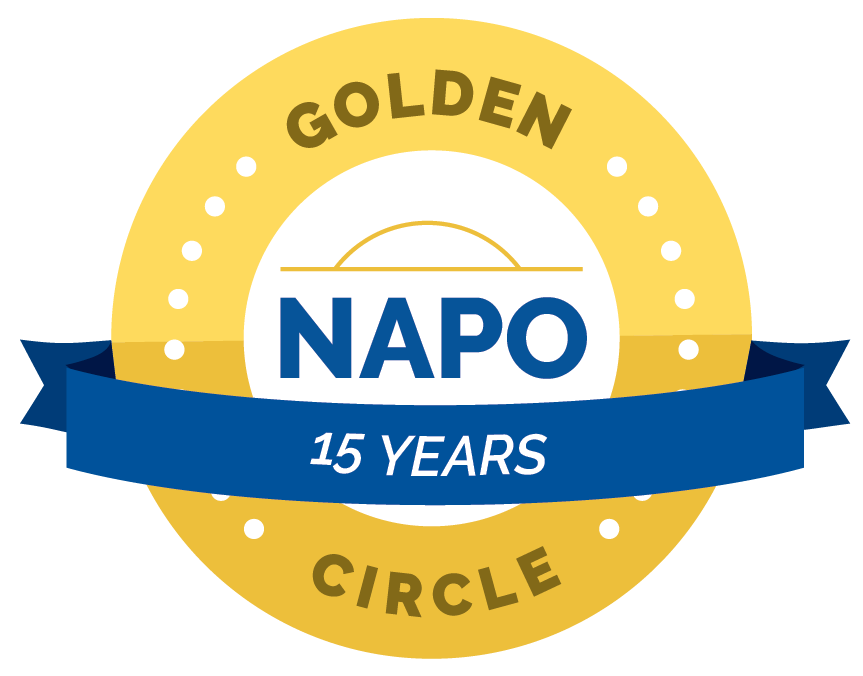
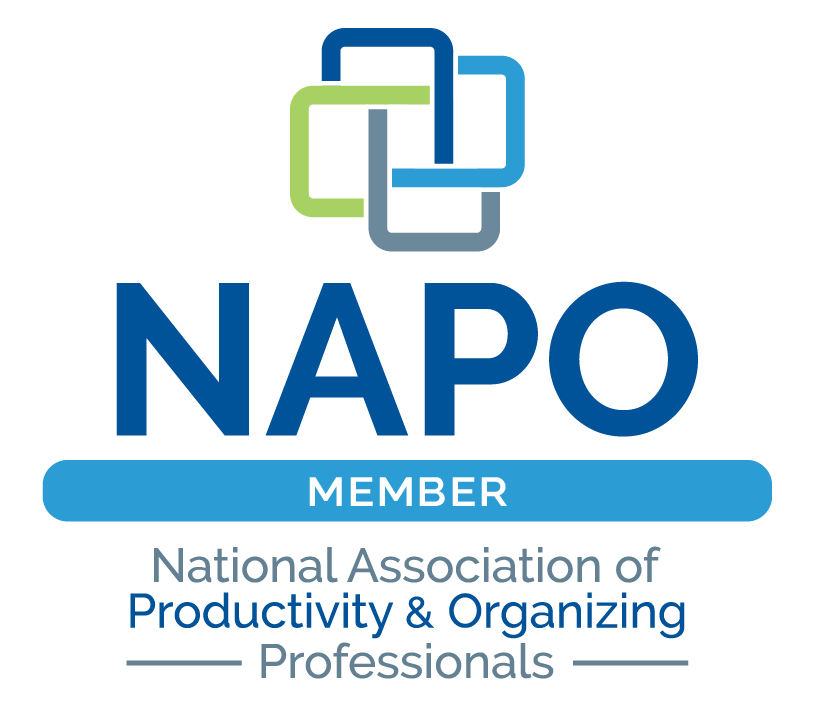

Follow Me